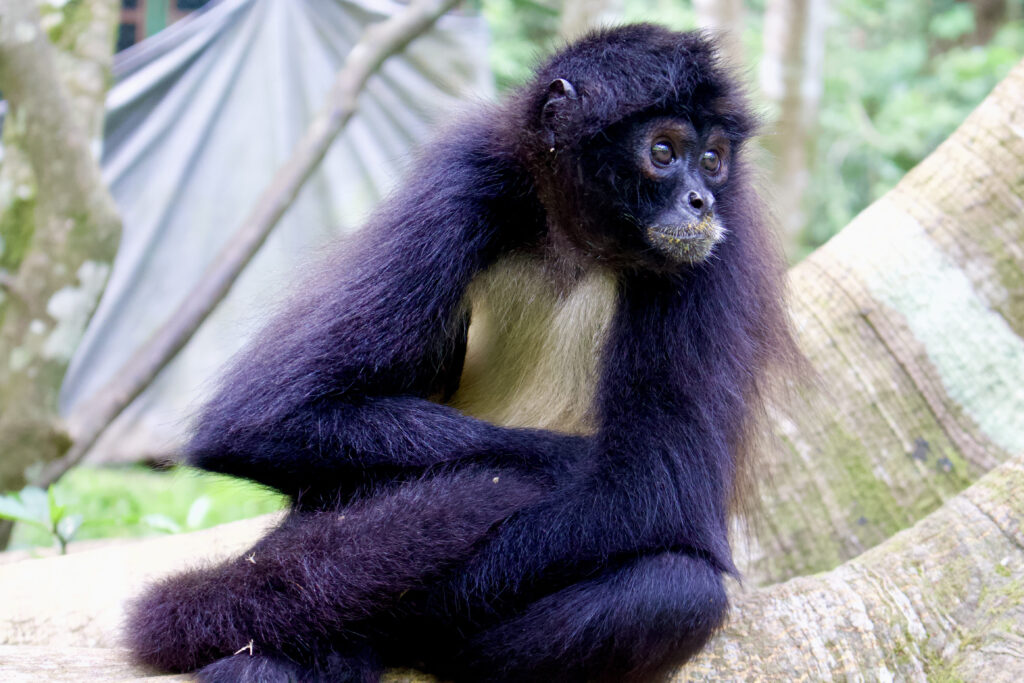Background
Aims
Primates in the wild encounter a range of foods as they inhabit dynamic environments. Therefore, it is essential to efficiently find and choose between various available food resources to obtain a sufficient amount of critical nutrients and metabolic energy. Rather than selecting food randomly primates have been shown to display marked food preferences. Several factors determine food choice like the availability and distribution of food sources, as well as the nutrient composition of food items.
Patchy food sources are widely dispersed, which requires high travel costs and considerable processing capacity for highly specialised frugivores like the black-handed spider monkey (Ateles geoffroyi). For many of these frugivorous primate species, the size of a fruit is the primary selection criterion and trait during foraging. Accordingly, it should be important for spider monkeys to have a well-developed ability to visually discriminate between fruits that differ in size. This can have significant impact on the animals’ fitness and maximise their net gain of metabolic energy, while minimising handling time.
Animals are also confronted with objects of various sizes throughout their lives outside the context of food selection, like conspecifics and predators. Therefore, the ability to visually discriminate between three-dimensional objects based on size differences is substantially important in different behavioural contexts such as social conflict, object manipulation and sexual selection. However, the discrimination of objects of different size has rarely been tested in primates in contrast to discrimination of different quantities.
It was the aim of the present study to:
- assess the ability of spider monkeys to visually discriminate between different sizes of a given type of food and
- assess the monkey’s ability to visually discriminate between different sizes of non-edible objects.
Performing these experiments with spider monkeys contributes to understanding the food choices of this endangered species in tropical environments and to improve the daily husbandry of captive primates.
